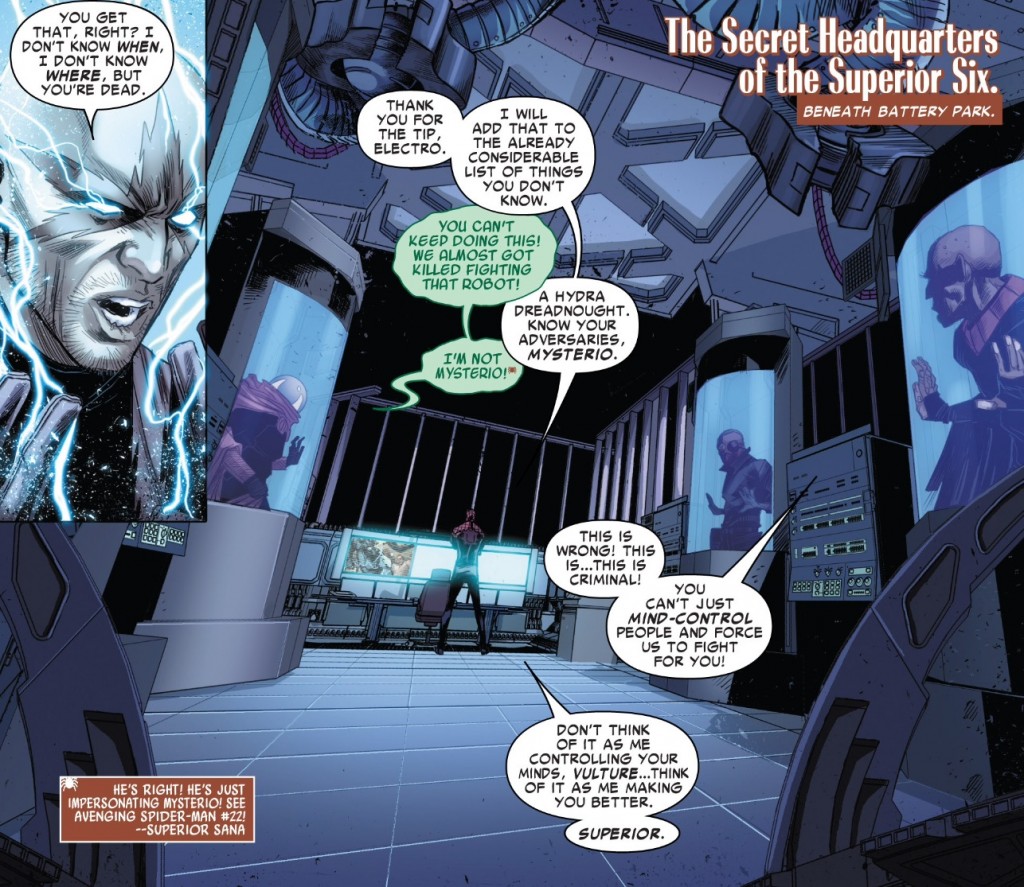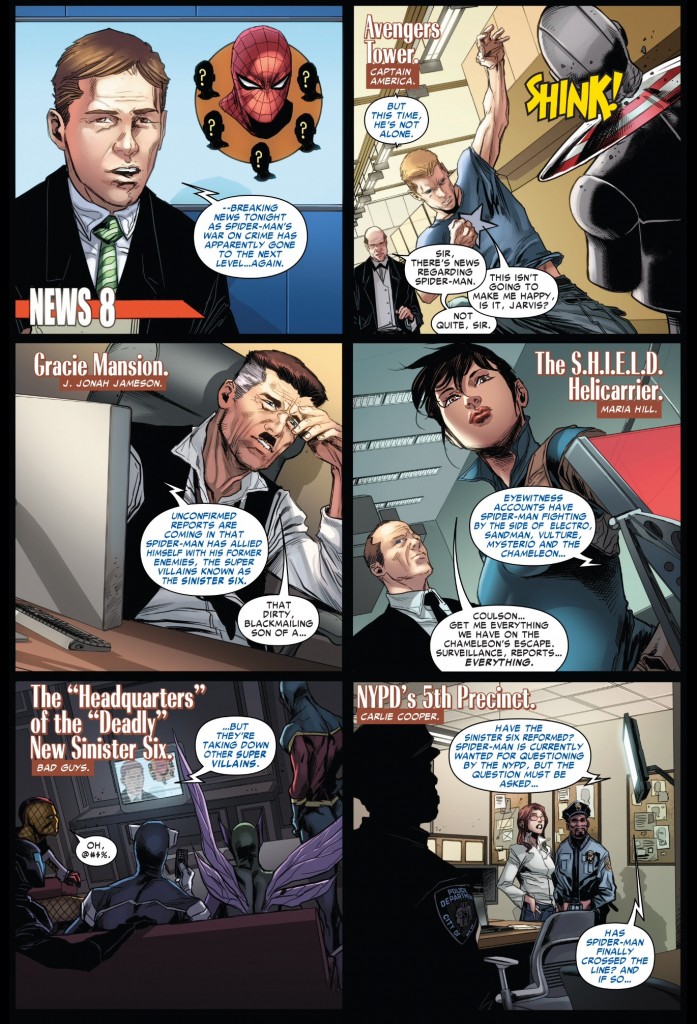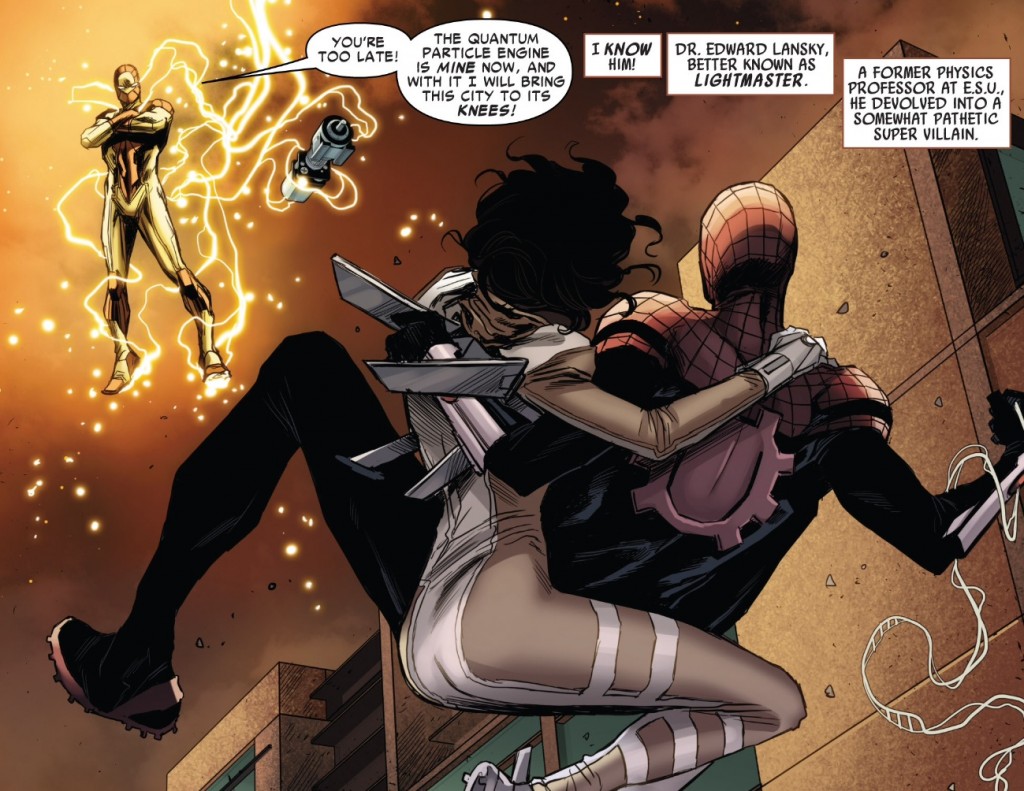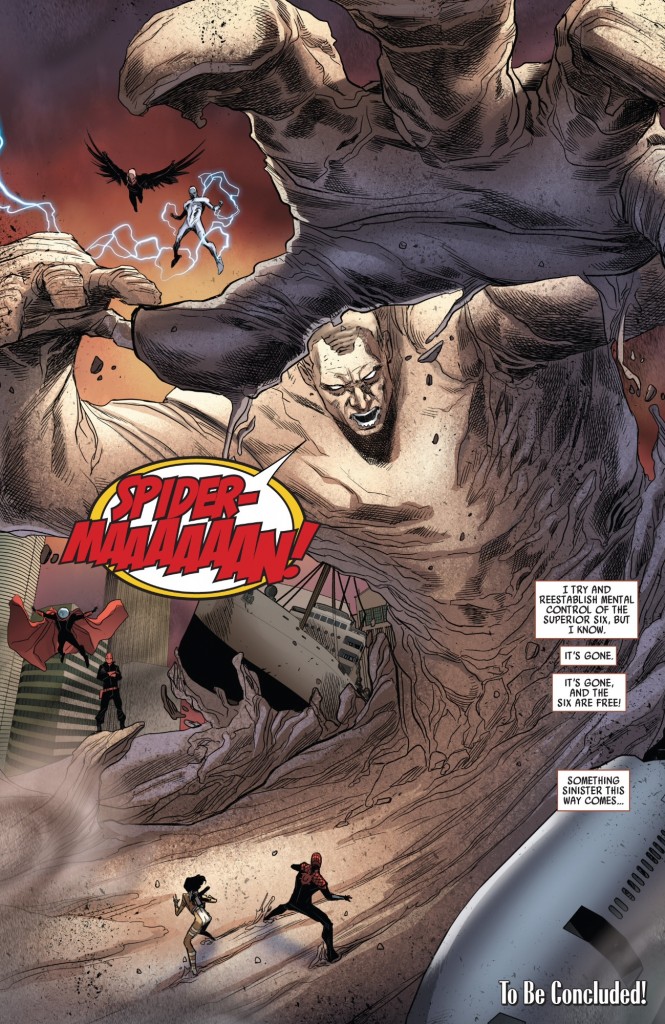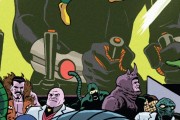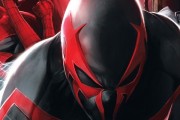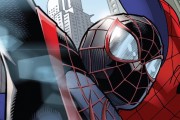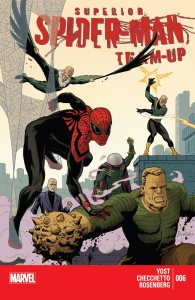 When it comes to the Superior Spider-Man Team-Up series, I remain a critical outlier. The series has done very little to engage me since it officially transitioned from Avenging Spider-Man to Team-Up, and the most recent “Superior Six” storyline strikes me as a creative low point for the title. And yet, when I scan the internet and see what others have written about this series, it’s apparent that my opinion is in the minority.
When it comes to the Superior Spider-Man Team-Up series, I remain a critical outlier. The series has done very little to engage me since it officially transitioned from Avenging Spider-Man to Team-Up, and the most recent “Superior Six” storyline strikes me as a creative low point for the title. And yet, when I scan the internet and see what others have written about this series, it’s apparent that my opinion is in the minority.
As somebody who prides themselves as being the kind of comic book fan that both hardcore and casual fans find accessible (at least the feedback left for the Superior Spider-Talk podcast on iTunes indicates as much), I find my outlier status on Team-Up to be disconcerting. Sure, everyone is entitled to their own opinion, and I’m fairly certain if I just stood on my digital soap box and either praised or criticized every Spider-Man comic unilaterally, most of you would find Chasing Amazing to be boring. But I’m honestly starting to question what exactly am I missing in this series?
To be more specific in my criticism as it pertains to Team-Up #6, the comic reads as the epitome of a placeholder issue, meandering from fight scene to fight scene, before settling on the inevitable and well-telegraphed plot reveal for the storyline’s final installment next issue. When the premise of a Spider Ock-controlled “Superior Six” was introduced in Team-Up #5, were there really any readers out there who had any doubt that this arc was going to eventually lead to a violent showdown between Spider Ock and his former colleagues? I thought it was patently obvious when Sandman was essentially calling Spider Ock a monster in the last issue – a narrative beat that writer Chris Yost repeats again in this comic when members of the Sinister Six call out the “hero” for his highly unethical behavior.
But there were other moments in the story that just flat-out bothered me. Such as the opening sequence of panels showing a number of shocked/angered on-lookers watching/reading news reports that “Spider-Man” has aligned himself with a group of known supervillains. I realize that recent installments of Superior Spider-Man have demonstrated that Otto is losing his grip on this whole “let’s be a superhero” schtick, but I still find it implausible that Spider Ock would be so careless and cavalier about how much his public image would be tarnished by his new Sinister Six partnership. The entire Superior-era has been predicated on this idea that Spider Ock is so calculating and constantly thinking ahead. So how do we get from being Otto being the smartest man in the room, to be so flippin’ stupid about the potential consequences of his actions?
Then there was the utter disregard for the story’s villain, Lightmaster. Before I go any further, let me preface this by saying I’m not about to make some delusional plea that Lightmaster is an under-appreciated, upper-crust villain. I actually agree with the thesis of this story that Lightmaster is a B-lister at best (and probably more in the C/D range). But whereas that kind of character diminishment is done for laughs with the cast of Superior Foes of Spider-Man (and done well mind you), in the context of a more “serious” Spider-Man story, it smacks of cynicism and misplaced snark from Yost. If you’re writing a villain as a non-threatening joke, then what’s compelling me to read about this conflict? If Lightmaster is a tertiary character when compared to the Wrecking Crew and the Sinister Six, then why is he occupying so many pages in my comic book?
Part of what I’ve really enjoyed about Dan Slott’s writing on Superior is that he’s managed to successfully establish two things that are otherwise in total conflict with each other: he’s created an entirely brand new comic book series that has a totally different tone from its predecessor, but has done so in a way where it still feels like it “belongs” as part of the Spider-Man universe. The characters, themes and plots in Yost’s scripts are all unrecognizable to me. There’s little to any joy in the stories he tells – just a dark, dreariness that month after month (or in this case, twice a month) further alienates me from this series. Perhaps I’m just an old fart that refuses to let go, but when I think of a Spider-Man story, I always come back to the operatic (some would say melodramatic) tones of Stan Lee. I want to pick up a Spider-Man comic and be legitimately surprised by it, while also thinking it’s the most important issue in the series that I’ve ever read. Plenty of writers have picked up on Stan’s tone – Roger Stern, Tom DeFalco, J.M. DeMatteis and Slott just to name a few. Then there are writers like Paul Jenkins and J.M. Straczynski who have given the character more “real world” problems, but have done so in a way that still remains (mostly) true to the character.
I honestly don’t know what Yost was trying to say about the character and its surrounding/supporting universe during his run on Avenging/Team-Up, so I’ll readily admit that I was relieved to read that he’s leaving the title soon, and Kevin Shinick, who’s Superior Carnage mini is shockingly entertaining, is taking over for at least a few issues. It sounds like some of you out there are probably disappointed by Yost leaving, but I think a change in direction is desperately needed for a series that has become an absolute chore for me to read every time it gets published. I actually winced when I saw another one of these Team-Up issues is coming out next week and I’ll announce right now that it’s certainly at the bottom of my to-read pile underneath the rest of next week’s releases which include Superior, Marvel Knights and the first Amazing Spider-Man point one issue. Again, if someone wants to post a comment about what is so great about this series (beyond Marco Checchetto’s pencils, which I’ll admit are pretty good) and what’s so worthwhile about Yost’s scripts, I welcome the debate.
All images from Superior Spider-Man Team-Up 36: Chris Yost & Marco Checchetto

